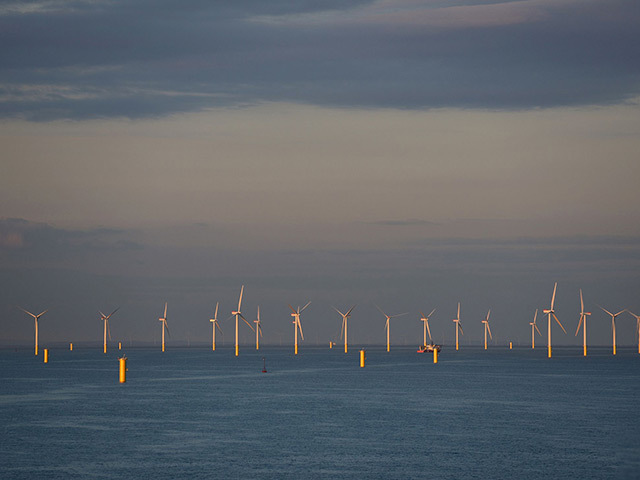
Scotland’s burgeoning offshore wind industry was dealt a blow yesterday after a judge in Edinburgh upheld a legal challenge against four developments.
The long-awaited ruling published by the Court of Session in Edinburgh upheld objections by the bird protection charity, RSPB, to planning consent given to four offshore wind farms projects.
The decision leaves the wind farms without planning permission after Lord Stewart sided with RSPB claims that the consents granted by Scottish Ministers were defective.
Developers of the Neart na Gaoithe, Inch Cape and Seagreen Alpha and Bravo developments off Scotland’s east coast has initially won the backing to build the sites in 2014.
The wind farms include hundreds of turbines said to be capable of producing up to 2.284 gigawatts (GW) of electricity, enough to power 1.4 million homes.
RSPB Scotland said the decision to challenge the consents in the courts had been taken “with great reluctance” and as a last resort to protect thousands of gannets, puffins, kittiwakes and other seabirds.
Energy Minister Paul Wheelhouse said: “Scottish ministers note Lord Stewart’s judgement and will now carefully consider it and its implications.
“The Scottish Government remains strongly committed to the development of offshore wind energy as this key low-carbon technology offers a huge economic opportunity for Scotland, but, crucially, through helping to decarbonise our electricity supply it also has a key role to play in our fight against the threat posed by climate change to both our society and our natural environment.
“Clearly, protecting Scotland’s marine environment is of paramount importance: it is at the heart of the Scottish Government’s approach to offshore renewable energy applications, and we are keen to work constructively with both the RSPB and renewable energy developers to ensure the sector has a bright future in Scotland.”
The setback comes just weeks after better news for the sector, as SSE pushes ahead with plans for the £2.6billion Beatrice windfarm in the Moray Firth.
The Alpha and Bravo Seagreen developments would be located east of the Angus coastline and consist of a maximum of 150 wind turbines with a generating capacity of up to 1,050 megawatts (MW).
A spokeswoman for Seagreen Wind Energy, a partnership between SSE and Fluor, said the firm was “disappointed with the judgment”.
She added: “We will review the findings in detail and, in consultation with our legal team, consider our next steps.”
The 450 MW Neart na Gaoithe wind farm off the Fife coastline is being developed by Mainstream Renewable Power.
A statement from Dublin-based Mainstream said it “remains committed” to developing the wind farm.
“Neart na Gaoithe has the potential to make a significant contribution to both the Scottish and Westminster governments’ commitment to climate change and to an improved environment which is the vision of so many people and organisations,” said the statement.
“This £2billion project is capable of supplying homes in a city the size of Edinburgh with clean energy and we look forward to bringing it to market.”
The Inch Cape wind farm, now owned by the Chinese state-owned State Development and Investment Corporation (SDIC), is located around nine miles off the Angus coast and would have up to 110 wind turbines generating around 784 MW.
Lloyd Austin, head of the charity’s conservation policy, said: RSPB Scotland is encouraged by the decisions of the court, which have recognised the huge risks from these four offshore wind farms on Scotland’s internationally important areas for seabirds.
“Although RSPB Scotland’s decision to take legal action was the right one, it is very regrettable that such significant time and effort was needed to reverse the decisions which put so much of Scotland’s wildlife at risk.”
He added: “RSPB Scotland will continue to robustly resist any projects which threaten Scotland’s best places for wildlife. However, we also remain resolutely supportive of the development of renewable energy sources in Scotland.”
Recommended for you

